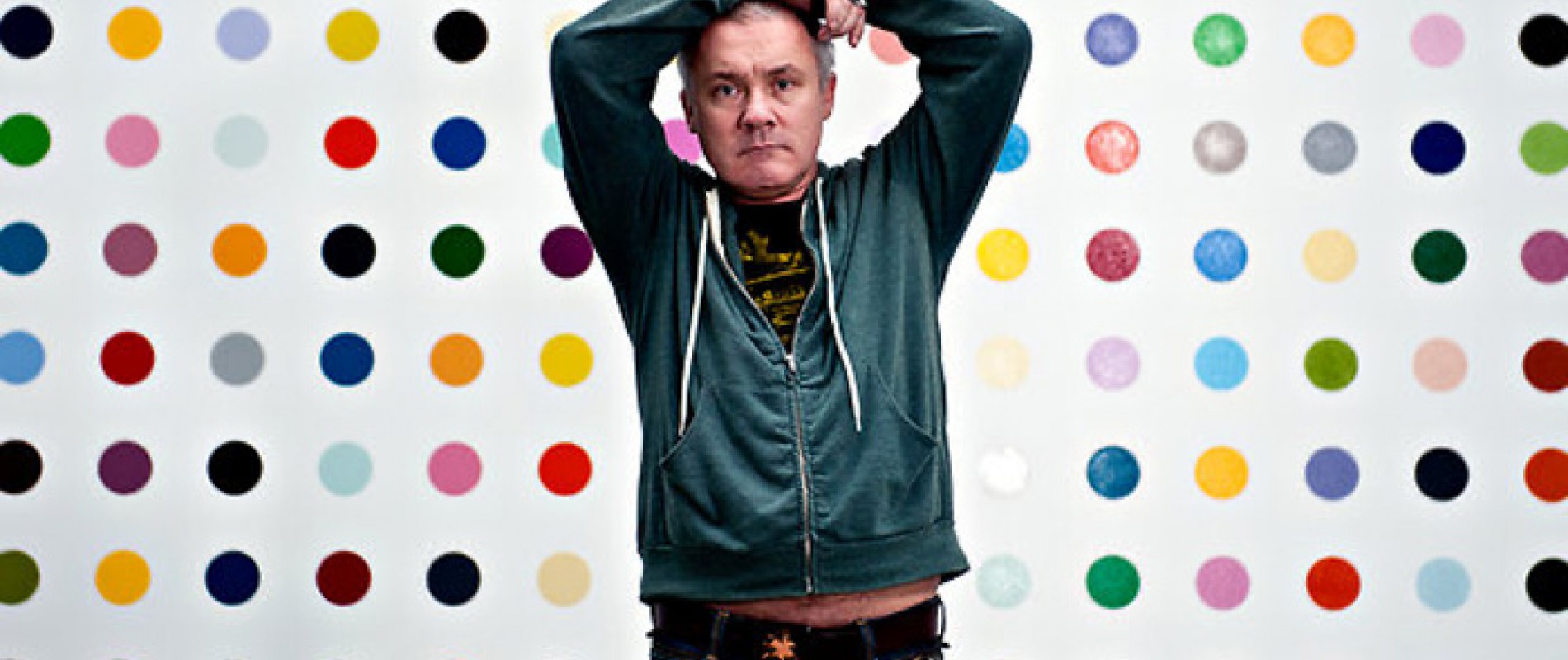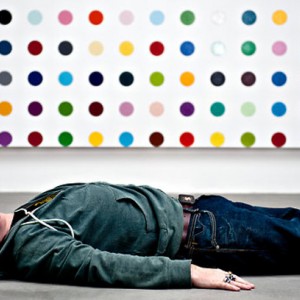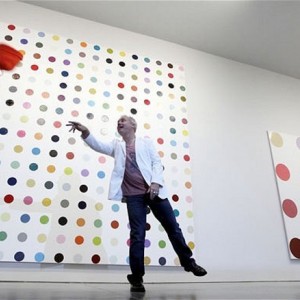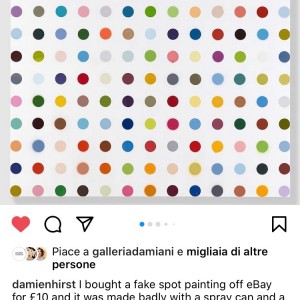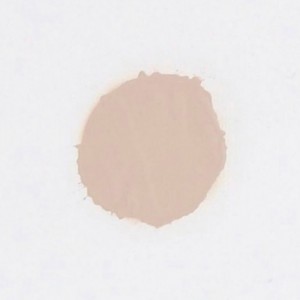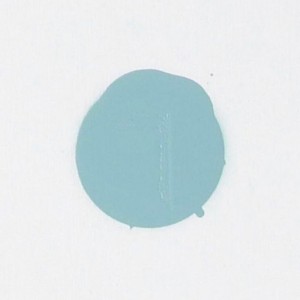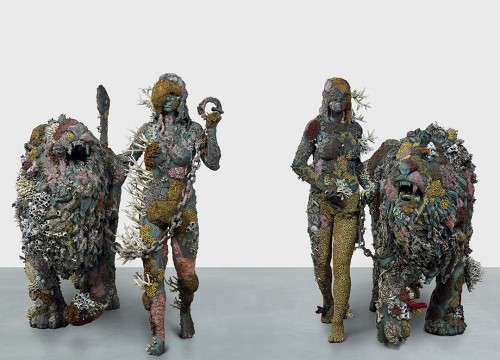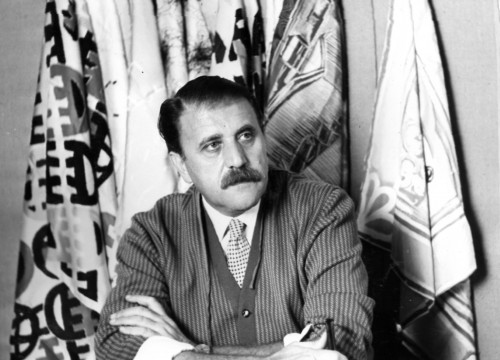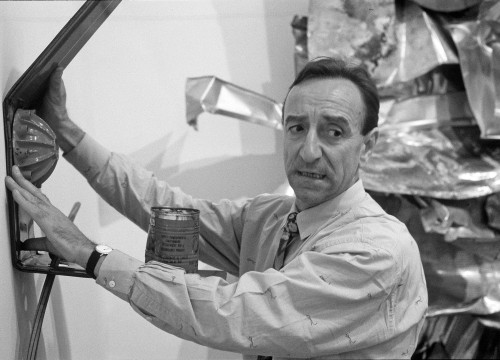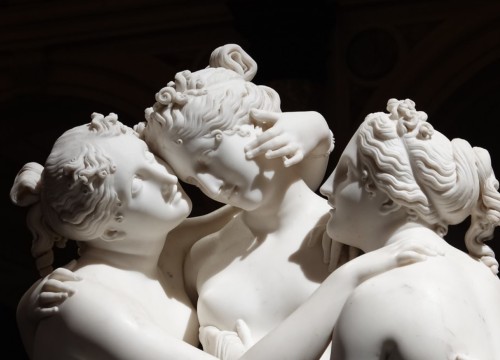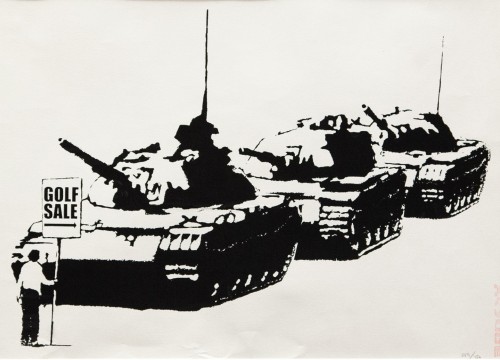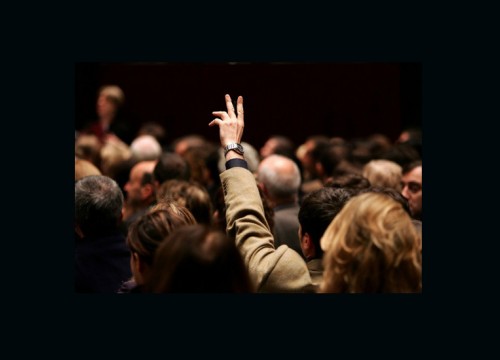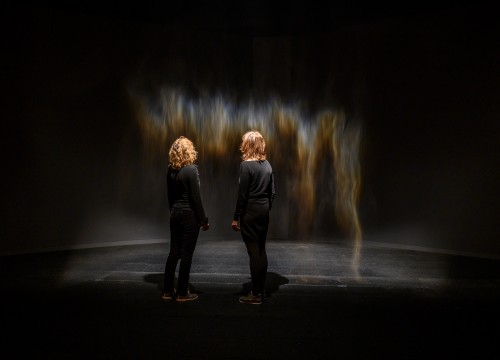The Operation Invites Reflection. Is a Single Artist Signature Sufficient in order to Declare a Work Authentic?
Recently, on the Instagram page of Damien Hirst, appeared a post which was mostly unobserved even though it represented a unicum, a unique work by the young British artist. The artist declares that he bought a fake copy of one of his own works, executed badly, on Ebay: It was a Spot Painting, a work with a grid organized in coloured dots on a white background, part of a fortunate series of thousands of pieces all over the world. It is not the first case of reappropriation in contemporary art. There are many famous examples, the Takahashi cut by Fontana, the de Kooning erased by Rauschenberg, the Richeter transformed into a table by Kippenberge and in suspect times, the three coloured Fontani by Vezzoli. Nevertheless, in each of these examples the works of some artists have been stolen by others. Now, we are in front of an artist who reappropriates his own work but it is a fake. In some of the post’s comments, this act was improperly said to be similar to de Chirico who signed his own work executed by one of his assistants and then sold as an original de Chirico. In Hirst’s case, there a too many factors which demonstrate how an action is something absolutely new. Above all, the English artist bought and signed a work that had not been painted with the objective of then becoming a fake, as is what happened in the case of pictor optimus.
The reappropriation, which he himself immediately made known, is devoid of fraudolent intentions
Second of all, this reappropriation was made known immediately and there wasn’t any fraudulent on the part of the artist, the motive for which, legally, he can’t be persecuted in any way. Finally, the work wasn’t put up for sale, at least for now, so he cannot be accused of profiting from someone else’s work. At the same time, similar conclusions could be derived when comparing Boetti and his hand tied tapestries by Afghan women. Another comment has insinuated a more than legitimate doubt, in my opinion. By signing the fake, does Hirst raise it up to par with the original? Or even better as a unicum? If this were the case, from now on he would be better off signing forgeries all day: maximum yield minimum effort. Furthermore, all this invites us to reflect on a theme. Is a signature sufficient to declare a work authentic? Apparently yes and the people, as well as the market, have nothing to complain about.

